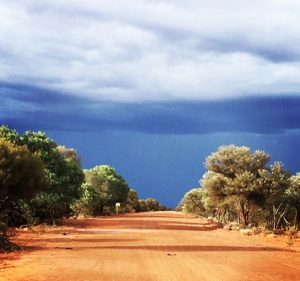Those of us that work daily with the provisions of the Aboriginal Heritage Act 1972 (AH Act), and closely with the government bureaucracy that administers it, know very well of the multitude of entrenched problems that persist. There has been no lack of political appetite to conduct formal reviews about the problems of poor standards of information recorded on the Sites Register, or the old-fashioned decision making processes which have led to a backlog of over 15,000 unassessed site applications, not to mention the time and high compliance costs land users incur to navigate the heritage regulatory ‘system’. The bureaucracy is often (and often rightly) criticised for inconsistent decision making. The primary cause of inconsistent decision making and inefficient processes is the fluctuating interpretation of section 5 of the AH Act.
The most fundamental question in Aboriginal heritage administration and compliance is: what, according to the legislation, is an Aboriginal site?
The legal ‘rights’ and ‘obligations’ of Aboriginal people and land users, are determined by the answer. For example, can the site be legally protected? Does the land owner need a section 18 consent? Should an entry on the Site Register be recorded?
Section 5 defines Aboriginal sites intended for ‘preservation’ by the State. The provisions articulated in each of the subsections are broad capturing both cultural material and sacred sites. The words in section 5 have been interpreted very differently by various public administrations since the last significant amendments to the AH Act in 1980. I won’t canvass the arguments here about the merits of each approach, suffice to say that the ebb and flow of narrow and broad interpretations of this fundamental tenet of the legislation creates inconsistency in decision making, uncertainty, and results in the problems highlighted above.
The interpretation of section 5 has never been settled by a court. The Supreme Court came close in 2015 in the Robinson v Fielding [WASC108] judicial review regarding the Aboriginal Cultural Material Committee’s (ACMC) assessment of Port Hedland Harbour being an Aboriginal site pursuant to section 5. But the court fell short and only ventured to give a couple more clues about valid considerations in the assessment process. The court’s decision has not resulted in a consensus interpretation or a meaningful set of rules that can be understood and consistently applied by the regulator, Aboriginal organisations, and land users alike. Indeed, the assessments made by the ACMC under the advice of the Department of Aboriginal Affairs (DAA) in the last 12 months, following the court ruling, have caused further confusion about the correct interpretation of section 5.

With the run-in to the State election in March 2017, each of the two major political parties has a plan to reform Aboriginal heritage in WA. The Liberals have said they will reintroduce their 2014 Amendment Bill arguing that it will result in improvements to the current system. Labor, largely in response to DAA’s proposal to register the entire town site of Broome as an Aboriginal sacred site (a mistaken interpretation of section 5), has announced that it will be focussing its efforts on reforming the bureaucracy, rather than the law. While it is encouraging that both parties are intent on improving the Aboriginal heritage ‘system’ for all stakeholders, their intended reforms will be undermined if they do not achieve greater clarity to section 5, either through settling a new form of words in the statute that reflects the sorts of Aboriginal sites that the State seeks to preserve (protect), or by issuing guidance that prevents the ongoing inconsistency of interpretation. Achieving either outcome can only be achieved by Aboriginal people leading the discussion.
Not until the section 5 issue is settled will the State have an Aboriginal heritage system that is characterised by clear and easy to understand rules, that are capable of being consistently administered by the bureaucracy, and result in the identification and preservation of important sites, as well as reduced regulatory compliance costs for land users. These benefits are all possible. They are the features of modern regulatory systems across the world.
The focus of the next Minister for Aboriginal Affairs should be to facilitate this fundamental discussion.

Recent Comments